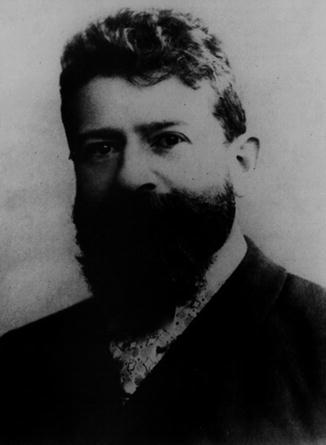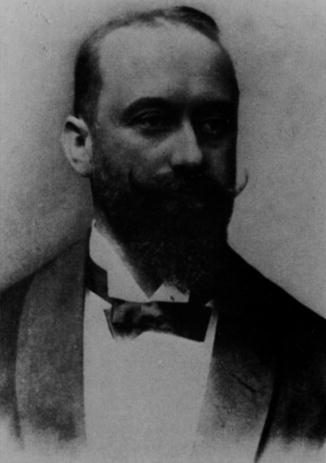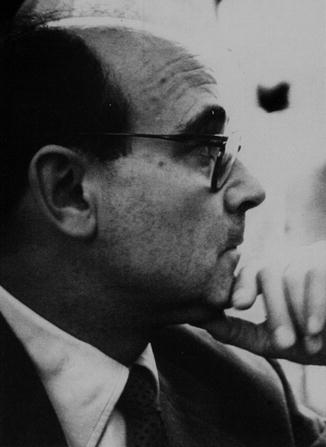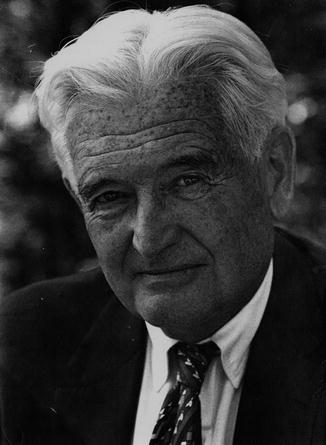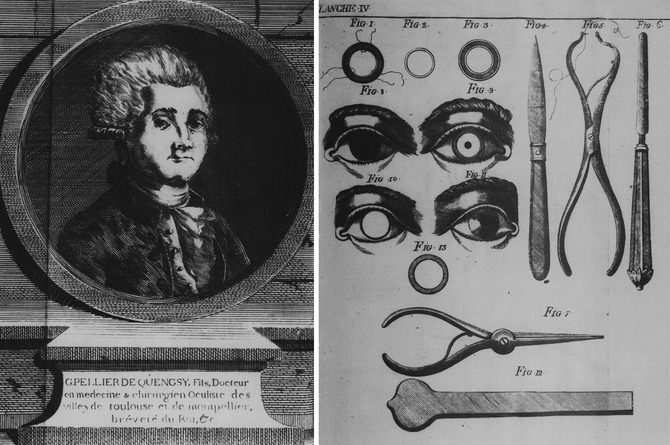
Fig. 1.2
Guillaume Pellier de Quengsy (left) (1751–1835) and his instrumentation (right) for prosthokeratoplasty (Image courtesy of Mannis and Mannis [1])
There are several books and papers that provide detailed reviews of the history of penetrating keratoplasty. In this brief chapter, we can only touch on some of the highlights, but the reader is encouraged to explore other sources for more detailed information [1, 4–13].
1.2 Keratoplasty: Experimentation in the Nineteenth Century
If the end of the eighteenth century witnessed the vision of prosthokeratoplasty, the first half of the nineteenth century was a time of intense experimentation. There is considerable controversy over who first replaced the opaque cornea with living donor tissue. In 1813, Karl Himly (1772–1837) first suggested replacement of the opaque human corneas with clear animal corneas. However, Franz Reisinger (1768–1755) is generally given credit for the first graft, and he coined the term “keratoplasty,” a term he used to describe the replacement of the cornea with animal tissue (1824) [14].
Johann Dieffenbach (1792–1847), also recognized as the father of strabismus surgery, documented extensive animal experimentation with keratoplasty in chickens, rabbits, and doves, but concluded that corneal transplantation was in the realm of fantasy [15]. Optimistic reports by Thome stimulated the Irish ophthalmologist Samuel L.L. Bigger to travel to Germany to learn the techniques firsthand. His capture by Sahara Bedouins in 1837 led to a series of experiments during his captivity in which he used the direct suturing of homografts in gazelles [16]. The grafts were relatively successful, but Bigger did not appreciate the significance of the use of homograft material or the value of direct appositional suturing.
After the first three decades of experimentation in the nineteenth century, interest in the feasibility of keratoplasty declined, largely due to discouraging results. There was a concomitant resurgence of interest in the keratoprosthesis with the discouraging results of keratoplasty, and in the 1850s and 1860s, Nussbaum, Heusser, and von Hippel, among others, devised and employed glass keratoprostheses which they implanted in patients with varying degrees of temporary success [17].
However, it was the work of Arthur von Hippel, a strong advocate of lamellar keratoplasty, who profoundly altered the keratoplasty procedure (Fig. 1.3). Unfortunately, von Hippel was an advocate of heteroplasty, and his work bolstered the trend to xenografting. Nonetheless, he made a major contribution to the technique of keratoplasty by inventing a mechanized trephine that greatly improved the procedure from a technical/surgical standpoint [18, 19].
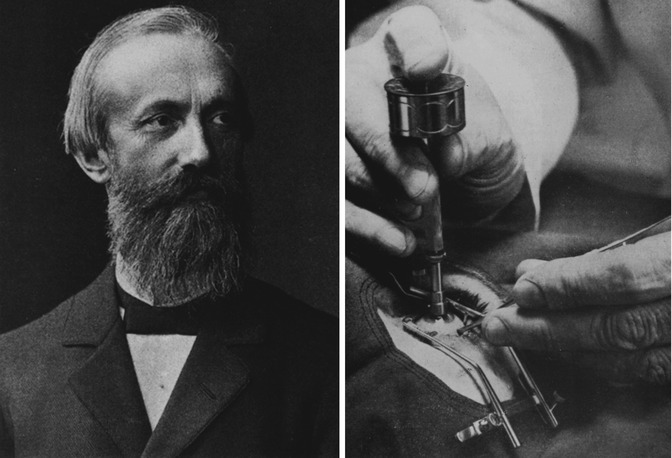

Fig. 1.3
Arthur von Hippel (left) (1841–1916) and his mechanized trephine (right) (Image courtesy of Mannis and Mannis [1])
In 1872, Henry Power (1829–1911) reported both xenografting from rabbits to humans and human allografts with some degree of success. His report stimulated renewed interest in tissue transplantation. Ernst Fuchs (1851–1930) reported a series of 30 penetrating grafts with poor results, using both animal and human tissues. Despite the fact that he recognized the superiority of human tissue as graft material, xenografts, with marginal success, continued to dominate the field into the first decade of the twentieth century [20].
What the nineteenth century demonstrated was a storm of creativity in corneal replacement that was limited primarily by a lack of understanding of basic physiology including the role of the corneal endothelium and basic function of the immune system in graft rejection. No doubt, the lack of suitable technology, the von Hippel trephine notwithstanding, also hampered successful keratoplasty. This would begin to change rapidly at the beginning of the twentieth century.
1.3 The Early Twentieth Century: Successful Penetrating Keratoplasty
The turning point for penetrating keratoplasty came from an unlikely place—a small town in Moravia far from the great centers of European medical science. The now celebrated successful penetrating graft performed by Eduard Konrad Zirm (1877–1944) defined the principles of modern corneal transplantation [21] (Fig. 1.4). Using the cornea from the enucleated eye of an 11-year-old boy, Zirm performed bilateral penetrating grafts in a 45-year-old farm worker who had sustained bilateral alkali burns 16 months earlier. Although this was his only reported case, Zirm defined the basic requirements for successful penetrating keratoplasty including the exclusive use of human donor tissue, strict asepsis, the avoidance of antiseptic agents in contact with the donor cornea, protection of the graft using gauze moistened with physiologic saline, the use of overlay sutures, and the judicious selection of cases. Despite his report, lamellar grafting continued to dominate the field for the next two decades.
The importance of Zirm’s case report with his articulation of surgical principles was its influence on the great schools of ophthalmic clinical science including the work of Tudor Thomas in England in the 1920s, Anton Elschnig and colleagues in Prague, and Vladimir Filatov in Odessa [22, 23]. Both Elschnig and Filatov had been advocates of lamellar keratoplasty. However, with the report of Eduard Zirm, they turned to partial penetrating keratoplasty.
It was Elschnig (1863–1939) who reported successful penetrating keratoplasty in 1914 (Fig. 1.5). His series of over 180 transplants reported a 22 % success rate, and he defined many of the principles of pre-, intra-, and postoperative management of penetrating grafts [24]. In Odessa, Vladimir Filatov (1875–1956), encouraged by the reports from Elschnig in Prague, studied penetrating keratoplasty systematically (Fig. 1.6). During a career in which he performed over 3,000 corneal transplants, he devised novel instrumentation, advocated direct suturing techniques, first employed cadaver corneas presaging the development of eye banks, and appreciated the importance of the ocular surface by protecting the graft with an egg membrane [25, 26]. The innovations of Elschnig, Filatov, and others in the 1930s and early 1940s began to define the surgical principles that would lead to successful penetrating keratoplasty.
1.4 The Mid-Twentieth Century: Refinement, Standardization, and the Spread of Keratoplasty
While there were many important figures whose names resonate in the history of keratoplasty including Paufique and Charleux (France), Tudor Thomas and Rycroft (UK), Arruga and Barraquer (Spain), Imre (Hungary), Franceschetti (Switzerland), and Vannas (Finland), the focus of keratoplasty moved in large part to the United States.
Ramon Castroviejo (1904–1989), a mercurial Spanish ophthalmologist who moved to the United States in 1929, became a strong vocal advocate of penetrating keratoplasty (Fig. 1.7). A prolific surgeon practicing in New York City, Castroviejo made numerous innovations in surgical instrumentation, which became standard implements in keratoplasty still employed today. The miniaturization of instrumentation anticipated the introduction of the operating microscope, which would only become used two decades later. Castroviejo experimented with different graft shapes and, for many years, employed the signature square graft with considerable success. With complete conversion to direct appositional suturing, the circular graft again became standard in the field [27, 28].
Contemporary with Castroviejo and also practicing in New York City, Richard Townley Paton (1901–1984) founded the first eye bank, the Eye-Bank for Sight Restoration [29] (Fig. 1.8). The quiet but deliberate Paton who had trained with Wilmer at Johns Hopkins dedicated much of his professional life to the concept of eye banking, beginning with collecting tissue from executed prisoners to the founding of a public institution, which eventually stimulated the most successful and productive eye banking system in the world. Paton founded the eye bank in a period amidst considerable public criticism and controversy but recognized the importance of a source of reliable, safe, and equitably distributed tissue for transplantation.
